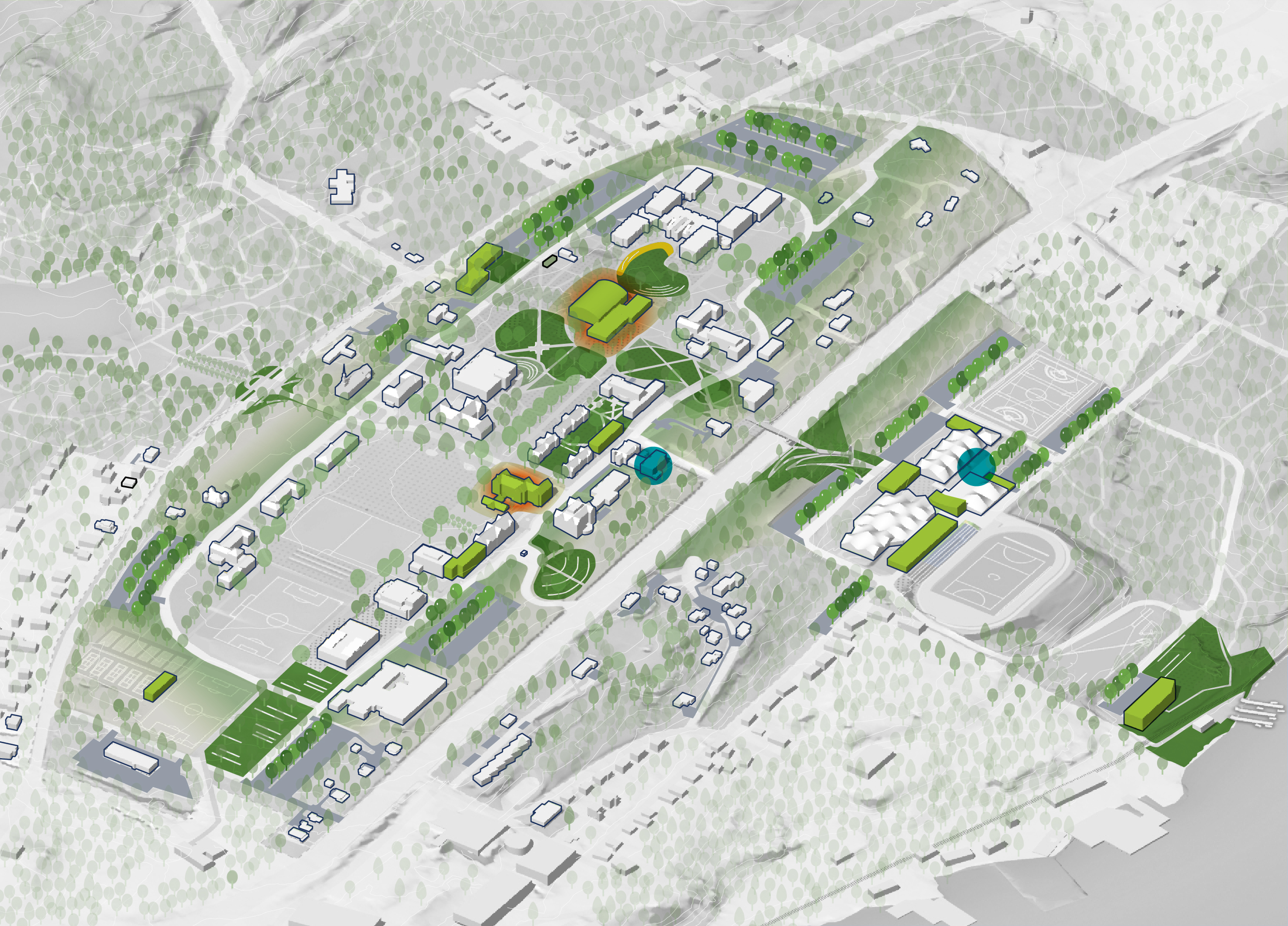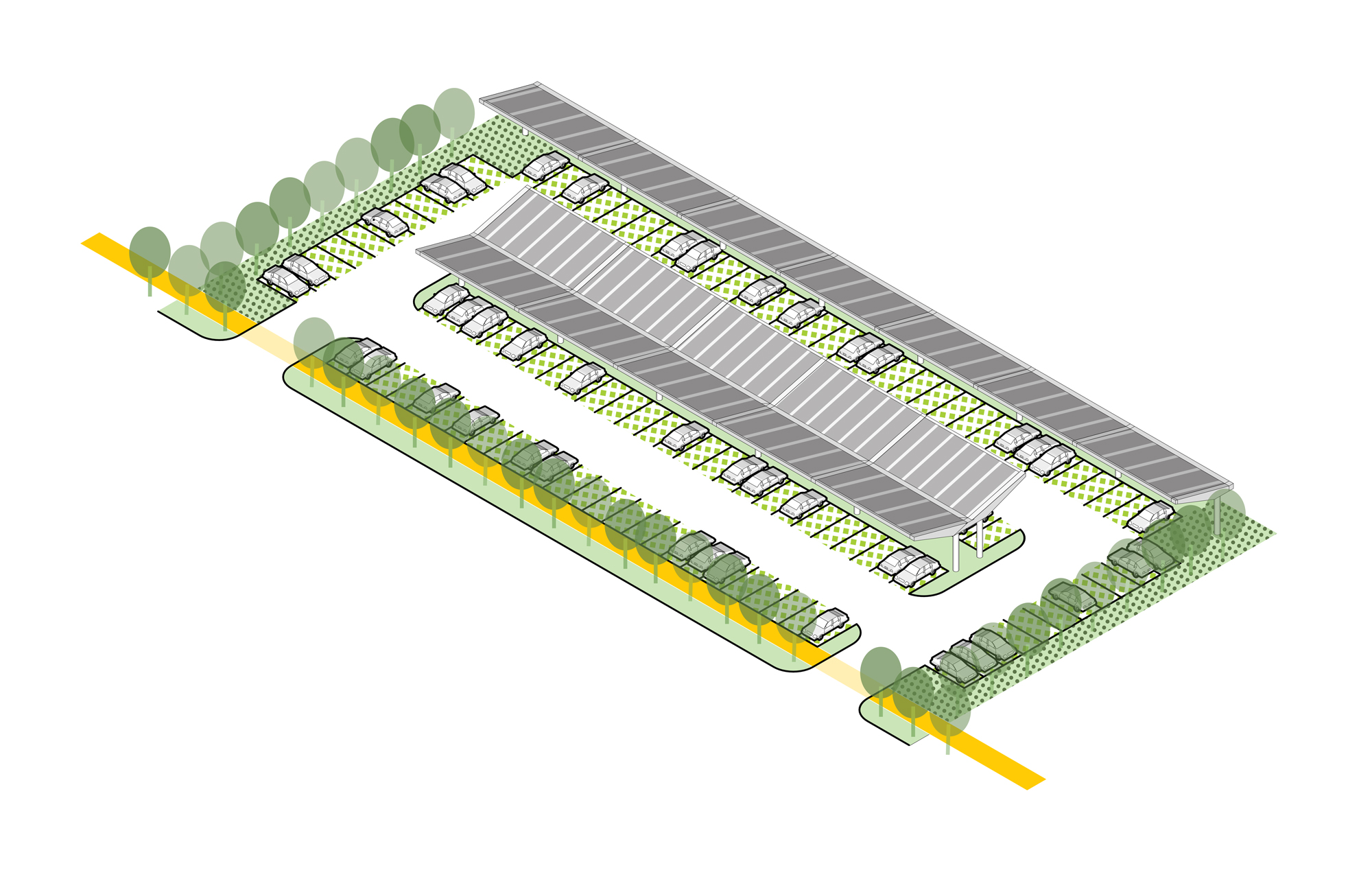Key Recommendations for Sustainability and Circulation
Connecticut College has an enduring commitment to environmental sustainability that is reflected in both the new Campus Master Plan and the new Campus Sustainability Plan. These two plans, together with the Strategic Plan Building on Strength, provide a roadmap to a more sustainable campus. Some of the key sustainability initiatives included in the master plan are the creation of parking gardens that will reduce stormwater runoff and could include solar carports, geothermal and solar energy initiatives to further reduce our carbon footprint, and environmentally conscious building renovations.
Improvements to the physical campus and landscape are designed not only for sustainability but also to create a more inviting, unified and aesthetically pleasing campus. The landscape plan is flexible and accommodates the evolving needs of the campus community and visitors over time.
The image below shows potential sustainability, landscape and circulation projects over the length of the Campus Master Plan. Current and future “green” buildings are shown in the lime green color and landscape enhancements are shown in dark green. Of particular note is the suggested improvement to the waterfront and the potential for a net-zero, off the grid building in that space.

Circulation
Improving mobility on campus, including pedestrian, bicycle and vehicular networks, is a priority of the Campus Master Plan. These networks are designed to work together so that members of the College community and visitors can easily move about and navigate the campus.
The pedestrian walkways will connect to bicycle and vehicular networks at strategic points, prioritizing pedestrian safety while enabling drivers to park their cars and easily walk around campus. The vehicular network is introduced via two gateways that also provide additional parking spaces and service access. Enhancements in this area, coupled with the proposed landscape changes, establish stronger wayfinding for the campus and strengthen first-impressions of the College.
